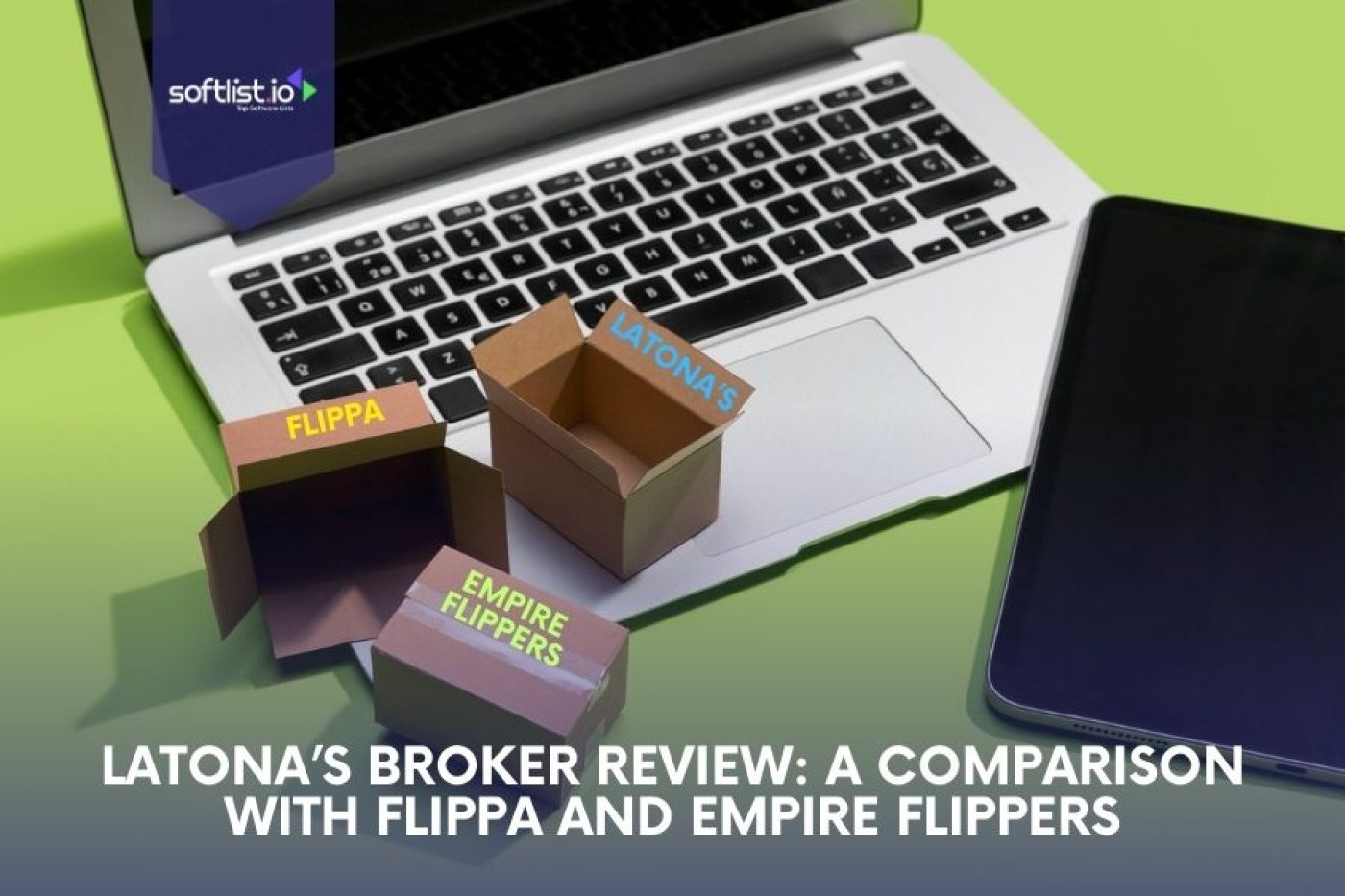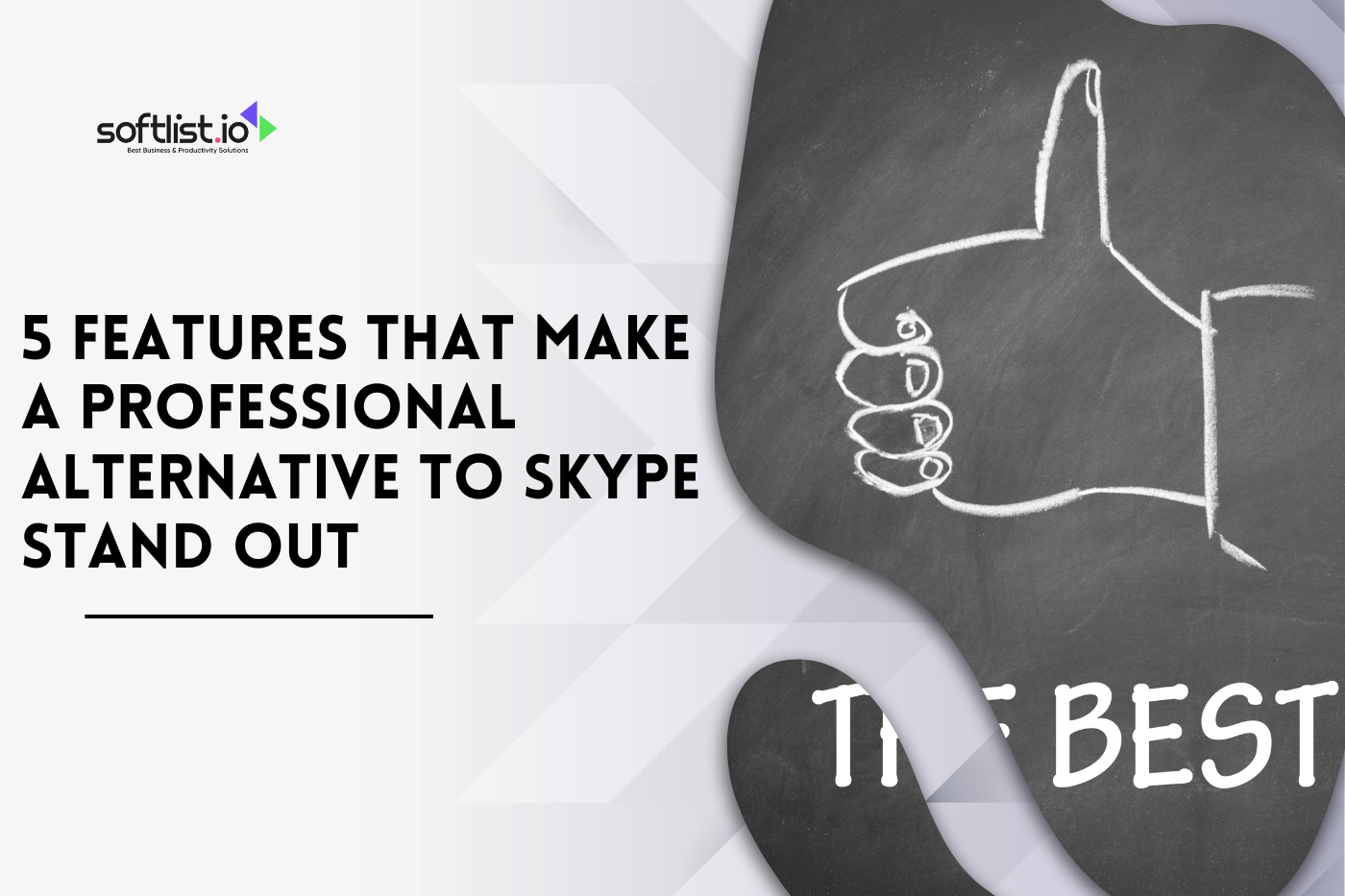Choosing the best 3D printing software can make all the difference in the world of 3D printing, for both new and experienced users.
When I started 3D modeling for the first time, all the options seemed like they would lead me astray. But the fun of making my digital creations come to life kept me looking. This trip taught me how important it is to have the right tools to make ideas come to life.
This guide covers the basics of 3D printing software to help you pick the best one for your creative projects. You can use the tips in this article to help you choose the right software, whether you are new to 3D printing or want to improve your skills.
Understanding 3D Printing Software: Klipper vs OctoPrint

The 3D modeling software you choose to control your 3D printer can make all the difference. Two popular options, Klipper and OctoPrint, emerge as key players, pivotal in ensuring precise and efficient aspects of 3D printing.
In this section, we’ll provide an insightful overview of both Klipper and OctoPrint, offering a detailed popular 3D printing software comparison to help you decide which one suits your needs best especially when you are a beginner.
Klipper: Unleashing Precision
Klipper, a firmware replacement for 3D printers, delivers unmatched precision and speed. It’s a favorite among those with advanced 3D printing setups, seeking to push the boundaries of what’s possible. With Klipper, you can optimize your printer’s performance monitor printing progress, and unlock its full potential in 3D printing technologies.
OctoPrint: Control and Convenience
OctoPrint, on the other hand, focuses on providing control and convenience to users of all levels. Ideal for those in search of user-friendly 3D printing software, it simplifies the printing process. OctoPrint’s web interface offers remote monitoring, making it an excellent choice for beginners and experts alike in 3d modeling and 3D printing.
Why the Right Software Matters in 3D Printing

The significance of choosing the right software is comparable to selecting the perfect tool for a specific 3D mechanical design. Whether immersed in 3D printing software configurations or searching for user-friendly solutions, your choice of software can profoundly influence the outcomes of your endeavors.
Within this segment, we embark on an exploration of the reasons why your software selection is of paramount importance and how it can elevate your overall 3D printable experience.
Advanced Precision: Your software choice plays a pivotal role in determining the precision and quality of your 3D prints. Choosing the right software can unlock the full potential of your 3D printer, resulting in exceptional creations.
Simplicity Meets Efficiency: Navigating the World of User-Friendly Tools For those just starting and individuals seeking a seamless and efficient experience, we dive into the realm of the best free user-friendly 3D printing software. Discover how simplicity can be your trusted companion on your widely used 3D printing journey.
Tailored to Your Needs: Adapting to Advanced Printing Setups If you’re venturing into the realm of advanced 3D printing setups, your choice of software becomes a critical component as you have full control and monitoring of your overall performance. Gain insight into how software can be customized to align with your ever-evolving requirements and the free 3D modeling program.
Optimizing Your Workflow: The Role of Software in Streamlined 3D Printing Software Our discussion revolves around how 3D printer hosts contribute to the optimization of the efficiency of your resources.
Setting the Stage: 3D printer software understands the full software feature selection for success In conclusion, we underscore the pivotal role of software in shaping the foundation of your printing journey. Making an informed decision is key to embarking on a successful and fulfilling path in the world of 3D modeling software.
Key Features of Klipper: Enhancing Your 3D Printing Experience
Klipper emerges as a robust and versatile software solution, deserving special attention. In this comprehensive segment, we explore Klipper’s capabilities, offering you an in-depth Klipper software review.
Join us as we dive into the realm of this 3D printing software designed for beginners, discovering how it can elevate your printing journey. Our primary focus lies in unveiling Klipper’s key features and functionalities, shedding light on how this software can enhance your 3D printing experience.
Precision at Its Best: Unveiling Klipper’s Core Features
Klipper has carved a niche for itself with its remarkable precision. Join us as we explore its core features, guaranteeing that your 3D prints attain the pinnacle of quality 3D objects. We’ll delve into print speed, accuracy, and 3D features.
Seamless Integration: Klipper and Your 3D Printer
Discover how Klipper seamlessly integrates with an extensive range of 3D printer models. We’ll discuss compatibility and the ease of setup, ensuring a hassle-free user experience.
Customization and Control: Tailoring Klipper to Your Needs
For those who relish control and customization, Klipper opens doors to endless possibilities of the type of 3D printing. Dive into the world of fine-tuning your 3D printing settings to match the precise requirements of your needed software.
Community Insights: Wisdom from the 3D Printing Community
Gain valuable insights from the vibrant 3D printing community. We’ll share user experiences, invaluable resources, and a strong support network that can enrich your Klipper journey as you build 3D and make it 3D printable.
Exploring OctoPrint’s Capabilities: A Comprehensive Guide
OctoPrint, a powerhouse in 3D printing software, is another formidable contender that demands our attention. In this section, we thoroughly explore OctoPrint’s offerings, with a keen focus on its capabilities as we dive into this comprehensive OctoPrint software review.
Discover why numerous 3D printing enthusiasts trust OctoPrint for their printing needs and learn how it solidifies its position among the top 3D printing applications with a software suite available today.
1. Remote Printer Control and Monitoring
- Web Interface: Access your 3D printer from any device with a web browser, including smartphones, tablets, and PCs.
- Real-time Monitoring: Watch your print jobs in real-time with integrated webcam support. This allows you to monitor the progress and detect any issues early on.
2. G-code File Management
- Upload and Access Files Remotely: Easily upload g-code files to OctoPrint and start printing without physical access to your 3D printer.
- File Organization: Organize your g-code files within OctoPrint, allowing easy access and management.
3. Print Job Management
- Start, Stop, and Pause: Control your print jobs with the ability to start, stop, and pause them directly from the web interface.
- Timelapses: Automatically generate timelapse videos of your prints, providing a visual record of your projects from start to finish.
4. Plugin System
- Extendable Functionality: OctoPrint features a powerful plugin system, allowing you to extend its capabilities with a wide range of community-developed plugins.
- Customization: Tailor OctoPrint to your specific needs with plugins for additional features such as detailed analytics, improved UI themes, and advanced monitoring tools.
5. Slicing Integration
- Direct Slicing: Some plugins allow direct integration with slicing software, enabling you to slice models within OctoPrint without needing separate software.
6. Advanced Printer Control
- Temperature Management: Monitor and adjust the temperature of your printer’s hotend and bed in real-time.
- Manual Movement Controls: Control the movement of your printer’s axes directly from the interface, allowing for manual positioning and calibration.
7. Notification and Alerts
- Event Notifications: Receive notifications for important events, such as print completion or errors, through various channels like email, SMS, or push notifications.
- Customizable Alerts: Set up custom alerts for specific scenarios, such as filament runout or temperature anomalies.
8. Access Control and Security
- User Accounts and Permissions: Create user accounts with specific permissions to control who can access and operate your 3D printer.
- Secure Connections: Support for secure connections through HTTPS, ensuring your print jobs and printer are protected from unauthorized access.
9. Detailed Analytics and Logs
- Print History and Statistics: Keep track of your print jobs, success rates, and usage statistics to optimize your printing process.
- Logging: Detailed logs provide insights into your printer’s operation and help diagnose issues.
10. Compatibility and Support
- Wide Compatibility: OctoPrint supports most popular 3D printer models and is continually updated to expand its compatibility range.
- Active Community: Benefit from a large, active community that contributes plugins, offers support, and shares knowledge and tips.
Side-by-Side Comparison: Klipper vs OctoPrint
Klipper and OctoPrint are popular software solutions in the 3D printing community, but they serve different purposes and complement each other’s functionalities. Klipper is a firmware that enhances the performance and capabilities of 3D printers, while OctoPrint is a web interface for controlling and monitoring 3D printers remotely.
Here’s a side-by-side comparison of their key features and functionalities:
| Broad compatibility with many 3D printers via a network connection | Klipper | OctoPrint |
| Primary Function | Firmware replacement for 3D printers | Web-based interface for 3D printer management |
| Main Objective | Improve printing speed and quality | Remote control and monitoring of 3D printers |
| Installation | On a microcontroller (e.g., Raspberry Pi) and printer’s mainboard | On a server device (commonly a Raspberry Pi) |
| User Interface | No direct UI; requires a host software (e.g., OctoPrint, Fluidd) | Web-based GUI accessible through browsers |
| Control Method | Enhances printer firmware for better performance | Provides a platform for sending G-code and printer commands |
| Monitoring | Depends on the host software | Real-time monitoring with webcam support |
| Print Job Management | Through host software (e.g., start, stop, pause prints) | Directly through the interface (start, stop, pause, etc.) |
| Plugin System | Limited; mainly through host software | Extensive plugin system for added functionalities |
| Slicing Integration | Indirect; via host software | Directly in the interface with certain plugins |
| Temperature Management | Advanced control through configuration files | Real-time monitoring and adjustments via UI |
| Print Quality | Can significantly improve with advanced algorithms | Depends on the slicer and printer firmware, not directly improved by OctoPrint |
| Compatibility | Requires specific firmware setup; supports multiple printer boards | Broad compatibility with many 3D printers via network connection |
| Community Support | Strong, with active development and forums | Very large and active community with extensive plugin development |
Pros and Cons: Making an Informed Decision
Every choice in the world of printing software comes with its trade-offs. In this section, we aim to provide a balanced view of the advantages and disadvantages of Klipper and OctoPrint. By the time you reach the end of this segment, you’ll possess a comprehensive understanding of each software’s strengths and potential drawbacks.
Armed with this knowledge, you’ll be well-prepared to make an informed decision that aligns seamlessly with your unique 3D slash printing needs.
Balancing the Scales: Pros and Cons Assessment
Pros of Klipper:
- Precision and Speed: Klipper excels in delivering precise and speedy 3D CAD prints, making it an ideal choice for those who prioritize print quality.
- Customization: With Klipper, customization options abound, allowing you to fine-tune settings and achieve tailored results.
- Community Support: Benefit from a dedicated community of Klipper users, offering many resources and insights.
- Compatibility: Klipper seamlessly integrates with various 3D printer models, ensuring a wide range of options for users as the ultimate cura.
Cons of Klipper:
- Learning Curve: The wealth of customization options may result in a steeper learning curve for newcomers.
- Advanced User Focus: While versatile, Klipper may be more suitable for users with a background in powerful 3D modeling tools.
Pros of OctoPrint:
- User-Friendly Interface: OctoPrint boasts an intuitive user interface, making it an attractive choice for beginners.
- Remote Control: Enjoy the convenience of remote control and monitoring of your 3D model with OctoPrint.
- Plug-in Support: OctoPrint’s plug-in system allows for easy customization and expansion of its capabilities.
- Community Resources: An active OctoPrint community offers ample resources and assistance.
Cons of OctoPrint:
- Print Speed: Some users may find OctoPrint’s print speed slightly slower than other software options.
- Customization Limitations: While customizable, OctoPrint may not offer the same level of fine-tuning as Klipper for advanced users.
Key Takeaway
The journey toward perfection commences with a crucial decision – selecting the best 3D printing and free CAD software. Throughout this comprehensive guide, we’ve navigated the intricate landscape of 3D printer management software Tinkercad, dissecting the standout contenders, Klipper and OctoPrint.
We’ve explored their strengths, uncovered their unique capabilities, and provided insights from the vibrant, advanced 3D printing community. By empowering you with this knowledge, we aim to assist you in making an informed choice that resonates with your 3D printing aspirations.
FAQs – Best 3D Printing Software
1. What are the system requirements for running Klipper and OctoPrint?
Klipper needs just a Raspberry Pi with 1GB RAM, while OctoPrint shines with a bit more oomph, ideally 2GB RAM or more. Both need a stable internet and some storage space, so check your printer’s specs for a smooth experience.
2. Can Klipper and OctoPrint be used for commercial 3D printing purposes?
Klipper and OctoPrint are great for the business side of 3D printing, offering speed, quality, and easy project management. Just make sure they gel with your setup and business needs.
3. How do Klipper and OctoPrint integrate with different 3D printer models?
Klipper and OctoPrint play nice with many 3D printers, though Klipper might ask for a firmware tweak. There’s plenty of help out there to get either software cozy with your printer.
4. What is the learning curve associated with each software for beginners?
OctoPrint is the friendlier starting point for newbies, thanks to its easy setup. Klipper’s got more knobs to turn, but don’t fret—there’s a community and loads of guides to help you get the hang of it.
5. Are there any community support or resources available for Klipper and OctoPrint?
Both Klipper and OctoPrint boast awesome communities brimming with support, advice, and how-tos. From forums to YouTube, a wealth of knowledge is just waiting to help you.
Unlock Your 3D Printing Potential with Softlist.io
At Softlist, we deeply appreciate the pivotal role that selecting the best software for 3D printing plays in your creative journey. Our mission is to empower businesses and enthusiasts like you with comprehensive insights into free 3D printing software.
The journey to perfection begins with the right software, and we’re here to guide you every step of the way. To learn more about printing, read our articles related to printing services!






